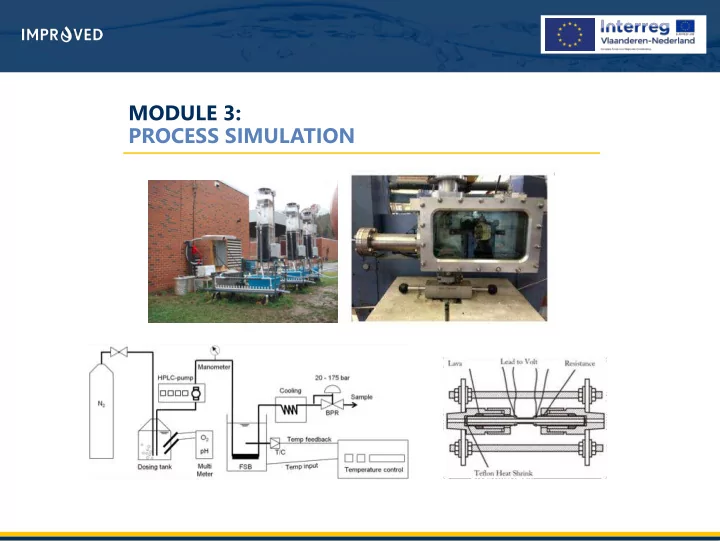

MODULE 3: PROCESS SIMULATION
Steamcracking in general
Cokes formation
BASF Qtech, http://www.basf-qtech.com/p02/USWeb-Internet/basf-qtech/en/
Cokes formation
Steam in steamcracking • Process steam: • Recycled within process • Used during cracking • Decoking steam: • Not recycled • Used during pretreatment and decoking (removal of cokes)
Pretreatment in steamcracking The purpose of this pretreatment is to form a stable (oxide) layer to reduce cokes formation Goal: formation of a stable, protective oxide layer at the inner surface of the reactor, mostly Cr 2 O 3 , but in newer materials sometimes also more stable Al 2 O 3 Method: put a mixture of steam and air through the reactor in the furnace Important parameters: • Steam/air ratio • Temperatures • As • Duration • Hg • Quality of steam and feed • Cl • Pb • Fe • Na • Dissolved O 2 • NH 3 • Sulphites • Phosphates
Pretreatment in steamcracking Comparable material composition, other pretreatments • Obvious big influence of pretreatment, especially in first cracking cycles • Asymptotic rate Catalytic rate 9 14 Coking rate [10-6 kg m-2s-1] Coking rate [10-6 kg m-2s-1] 7.8 8 11.2 12 Material A 7 10 6 Material B 8 5 3.4 4 5.1 6 3 4 2.4 2.2 1.5 2.1 2 1.87 0.78 2 0.75 0.7 1 0 0 1 2 3 1 2 3 Cracking Cycles Cracking Cycles
Influence of aging at elevated temperatures High T (EOR) 1CC: COT; 6 hours 2CC: COT; 2 hours 3CC: COT; 6 hours Catalytic coking 4CC: COT+110 °C/+160 °C*; 1.67 hours 5CC: COT = base; 12 hours *SCOPE Increase after high T exp Reduction after high T exp Reduction after high T exp
Influence of aging at elevated temperatures Coke after 2 (CC2) and 6h (CC3) ET 45 Micro and HT E + SCOPE comparable HT E significantly worse Line: estimated coking curve
Influence of aging at elevated temperatures Extrapolation for 12 h coke Assumptions: 2 h (CC2) = Catalytic 6 h (CC3) = asymptotic
Influence of aging at elevated temperatures Extrapolation based on tests prior to high T (EOR) exposure
Influence of aging at elevated temperatures Coke after high T exposure
Influence of aging at elevated temperatures Estimation coking curve
Influence of aging at elevated temperatures HT E better than expected ET 45 Micro worse than expected SCOPE design → Lower temperatures Lower influence high T excursion
After high T stable HT E Oxide to carbide Transition ET 45 Micro After pre-Ox Before high T Jakobi , et al., “The high -Temperature Corrosion Resistance of Spun-Cast Materials for Steam-Cracker Furnaces – A Comparative Study of Alumina- and Chromia-Forming Alloys ”, in NACE Corrosion, 2013.
Summary Very important to: • Test aging of materials at elevated temperatures • Optimise pretreatments • Condition steam to not damage reactor materials during pretreatment, cracking and decoking
CONTACT Arne Verliefde Professor Universiteit Gent Arne.Verliefde@Ugent.be 09/264.60.02
Recommend
More recommend